Understanding BCI Group U1 and U1R Batteries for Industrial Applications
When selecting the right battery for industrial equipment, one critical factor that cannot be overlooked is compatibility and performance. BCI Group U1 and U1R batteries are two of the most commonly used types in industrial machinery, backup power systems, and mobility equipment. This guide aims to help industry professionals, technicians, and decision-makers understand what sets these batteries apart, how to choose between them, and how to ensure long-term performance in the field.
- What is a BCI Group U1 Battery
- Understanding BCI Group U1R Battery Differences
- Battery Chemistry Options for U1 and U1R
- Performance and Lifespan of Group U1 and U1R Batteries
- Maintenance Tips for U1 and U1R Batteries
- Choosing the Right Battery for Your Industrial Application
- Popular Brands and Models to Consider
- Testing and Replacing Industrial Batteries
- Innovations in Group U1 and U1R Battery Technology
- Safety Guidelines for Industrial Battery Use
- Final Thoughts on BCI Group U1 and U1R Batteries
What is a BCI Group U1 Battery
The BCI (Battery Council International) group classification system organizes batteries by physical dimensions, terminal placement, and general capacity. The Group U1 battery is among the smallest 12V batteries in the BCI system, making it ideal for compact industrial equipment.
Dimensions and Specifications
A typical Group U1 battery measures approximately 7.75 inches in length, 5.18 inches in width, and 6.88 inches in height. It delivers 12 volts and has a capacity that typically ranges from 30 to 40 amp-hours, depending on the specific model and manufacturer.
Common Applications
These batteries are often used in:
Ride-on floor scrubbers
Small backup generators
Industrial mobility scooters
Lawn and garden equipment
UPS systems in industrial automation
Advantages of U1 Batteries
Compact size for tight installations
Lightweight and easy to transport
Availability in both flooded and sealed AGM types
Affordable price range
>>See also Wiring Six 12V Batteries to Build a 36V Power System
Understanding BCI Group U1R Battery Differences
The BCI Group U1R battery is almost identical to the U1, with one critical difference: terminal orientation. The "R" in U1R stands for "reverse," indicating that the positive and negative terminals are reversed compared to the standard U1.
Why Terminal Position Matters
When installing a battery in industrial equipment, the position of terminals is crucial for two reasons:
1.Safety – Reversed polarity can damage sensitive circuits.
2.Fitment – Wires and cables must reach terminals without excessive tension or risk of wear.
Industrial Use Case for U1R
The U1R is particularly beneficial when retrofitting older machinery or replacing a battery in a confined area where wire length is non-negotiable.
Battery Chemistry Options for U1 and U1R
Flooded Lead-Acid
The traditional and most affordable option. These batteries require regular maintenance and should be checked for water levels frequently.
AGM (Absorbent Glass Mat)
AGM U1 and U1R batteries are sealed, maintenance-free, and have better vibration resistance. They are more expensive but offer better reliability in harsh industrial conditions.
Gel Cell
Gel cell batteries provide deep-cycle capabilities and are even more resistant to vibration and temperature extremes than AGM models. However, they must be charged carefully to avoid damage.
Performance and Lifespan of Group U1 and U1R Batteries
Charge Cycles
Battery life in industrial use is often measured in charge cycles. A typical U1 AGM battery may last 300–500 cycles under normal use. Gel versions can exceed 600 cycles.
Environmental Factors
Temperature fluctuations, vibration, and charge/discharge patterns significantly affect battery longevity. Always consider the working environment when choosing between U1 and U1R types.
Maintenance Tips for U1 and U1R Batteries
Regular Inspection
Check terminals, cables, and housings for signs of corrosion, swelling, or leaks. Replace any battery showing these signs immediately.
Charging Practices
Use chargers specifically rated for AGM or gel batteries when applicable. Avoid overcharging or deep discharging, which can dramatically reduce battery life.
Seasonal Storage
If equipment is not used year-round, remove the battery and store it in a cool, dry place. Charge it every 2–3 months to prevent sulfation.
Choosing the Right Battery for Your Industrial Application
Determine Equipment Requirements
Always refer to your equipment's manual or consult the manufacturer for battery specifications. Pay attention to required voltage, amp-hour capacity, and terminal placement.
Compare U1 vs. U1R
If the physical specs match, choose based on terminal orientation. Installing the wrong type can lead to failed startups or electrical damage.
Evaluate Operational Conditions
For high-vibration environments or temperature extremes, opt for AGM or gel models. If cost is the primary concern and conditions are stable, a flooded battery may suffice.
Popular Brands and Models to Consider
Several reliable manufacturers produce high-performance Group U1 and U1R batteries suitable for industrial use:
Interstate Batteries: Known for long-lasting AGM options
Mighty Max: Offers affordable sealed U1 batteries
Duracell ProCell: Excellent vibration resistance and cycle life
Universal Power Group (UPG): Balanced pricing and quality for mid-range applications
Testing and Replacing Industrial Batteries
When to Test
Test your battery every 3–6 months under load conditions to ensure it still meets voltage and capacity specifications.
Signs It’s Time to Replace
Slow equipment startups
Dimming indicator lights
Swelling or leakage
Failure to hold a charge
Disposal and Recycling
Never dispose of a lead-acid battery in regular trash. Use local hazardous waste disposal or manufacturer take-back programs.
Innovations in Group U1 and U1R Battery Technology
Lithium Iron Phosphate (LiFePO4)
Although not yet standard in U1 sizes, lithium options are entering the industrial battery market. They offer longer life cycles (1000–3000), faster charging, and much lighter weight.
Smart Battery Management Systems
Some U1-sized batteries now include integrated BMS features that provide:
Temperature control
Overcharge protection
Bluetooth connectivity for performance monitoring
Safety Guidelines for Industrial Battery Use
Personal Protective Equipment (PPE)
Always wear safety glasses and gloves when handling batteries, especially flooded types.
Ventilation
Operate and charge lead-acid batteries in well-ventilated areas to avoid hydrogen gas buildup.
Emergency Preparedness
Have baking soda available to neutralize acid spills and keep fire extinguishers nearby.
>>See also Reasons to Choose a Craftsman 60V Lithium Ion Battery
Case Study: U1 Battery in Warehouse Robotics
One logistics company implemented AGM U1 batteries in their autonomous mobile robots (AMRs). The decision led to:
A 15% increase in runtime efficiency
Reduced maintenance downtime
Fewer battery replacements per year
This demonstrates the potential performance gains when the right battery type is matched to the right industrial need.
Frequently Asked Questions
Can I replace a U1 battery with a U1R?
Only if the terminal orientation matches your equipment's wiring configuration. Otherwise, you'll need to modify cables, which is not recommended.
Are U1 batteries interchangeable between brands?
Yes, as long as dimensions, voltage, and terminal layout match. Always verify manufacturer specs.
What is the best charger for U1 batteries?
Use a smart charger rated for your specific battery chemistry (flooded, AGM, gel). Overcharging is a major cause of early failure.
Final Thoughts on BCI Group U1 and U1R Batteries
Choosing the right industrial battery isn’t just about size and voltage—it’s about understanding your equipment’s needs and selecting a product designed to meet them over time. Whether you opt for a standard flooded U1 battery or an advanced AGM U1R with reversed terminals, performance depends on proper use, maintenance, and installation.
When it comes to supporting industrial equipment that powers critical operations, the right battery is a foundational element of efficiency and reliability. By understanding the differences and applications of BCI Group U1 and U1R batteries, you can make an informed decision that minimizes downtime and maximizes productivity.

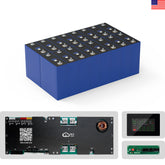

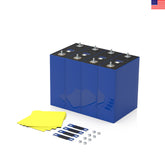

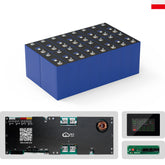

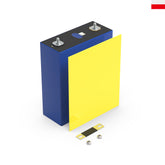

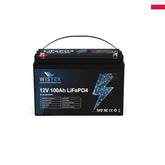
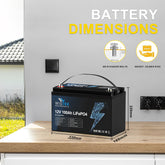
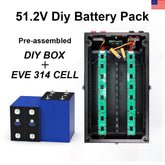

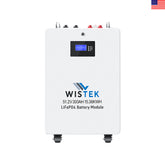
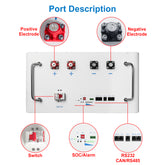
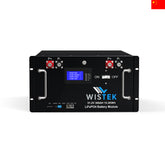
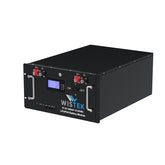


Leave a comment
All blog comments are checked prior to publishing